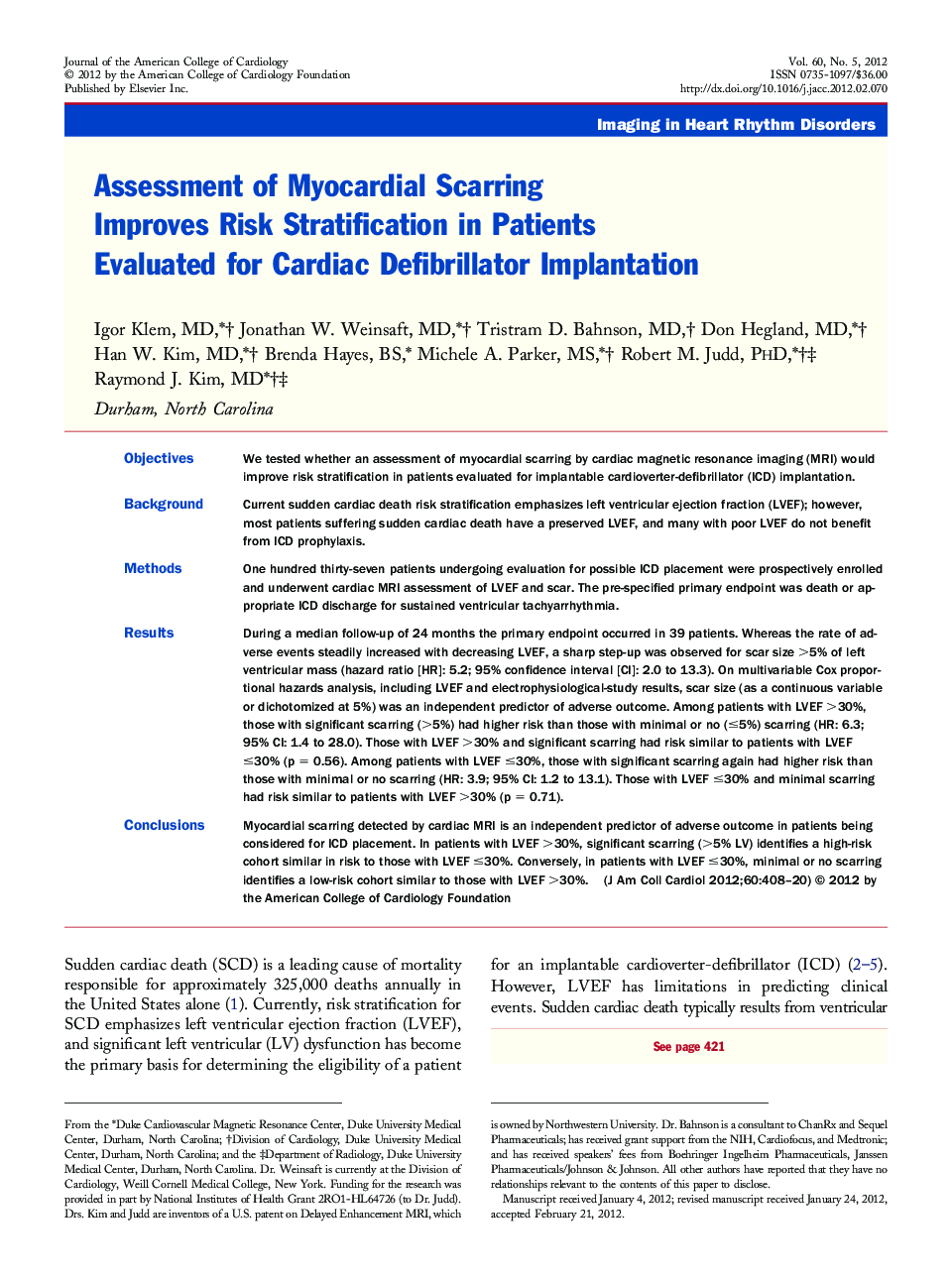| کد مقاله | کد نشریه | سال انتشار | مقاله انگلیسی | نسخه تمام متن |
|---|---|---|---|---|
| 2948421 | 1577201 | 2012 | 13 صفحه PDF | دانلود رایگان |

ObjectivesWe tested whether an assessment of myocardial scarring by cardiac magnetic resonance imaging (MRI) would improve risk stratification in patients evaluated for implantable cardioverter-defibrillator (ICD) implantation.BackgroundCurrent sudden cardiac death risk stratification emphasizes left ventricular ejection fraction (LVEF); however, most patients suffering sudden cardiac death have a preserved LVEF, and many with poor LVEF do not benefit from ICD prophylaxis.MethodsOne hundred thirty-seven patients undergoing evaluation for possible ICD placement were prospectively enrolled and underwent cardiac MRI assessment of LVEF and scar. The pre-specified primary endpoint was death or appropriate ICD discharge for sustained ventricular tachyarrhythmia.ResultsDuring a median follow-up of 24 months the primary endpoint occurred in 39 patients. Whereas the rate of adverse events steadily increased with decreasing LVEF, a sharp step-up was observed for scar size >5% of left ventricular mass (hazard ratio [HR]: 5.2; 95% confidence interval [CI]: 2.0 to 13.3). On multivariable Cox proportional hazards analysis, including LVEF and electrophysiological-study results, scar size (as a continuous variable or dichotomized at 5%) was an independent predictor of adverse outcome. Among patients with LVEF >30%, those with significant scarring (>5%) had higher risk than those with minimal or no (≤5%) scarring (HR: 6.3; 95% CI: 1.4 to 28.0). Those with LVEF >30% and significant scarring had risk similar to patients with LVEF ≤30% (p = 0.56). Among patients with LVEF ≤30%, those with significant scarring again had higher risk than those with minimal or no scarring (HR: 3.9; 95% CI: 1.2 to 13.1). Those with LVEF ≤30% and minimal scarring had risk similar to patients with LVEF >30% (p = 0.71).ConclusionsMyocardial scarring detected by cardiac MRI is an independent predictor of adverse outcome in patients being considered for ICD placement. In patients with LVEF >30%, significant scarring (>5% LV) identifies a high-risk cohort similar in risk to those with LVEF ≤30%. Conversely, in patients with LVEF ≤30%, minimal or no scarring identifies a low-risk cohort similar to those with LVEF >30%.
Journal: Journal of the American College of Cardiology - Volume 60, Issue 5, 31 July 2012, Pages 408–420